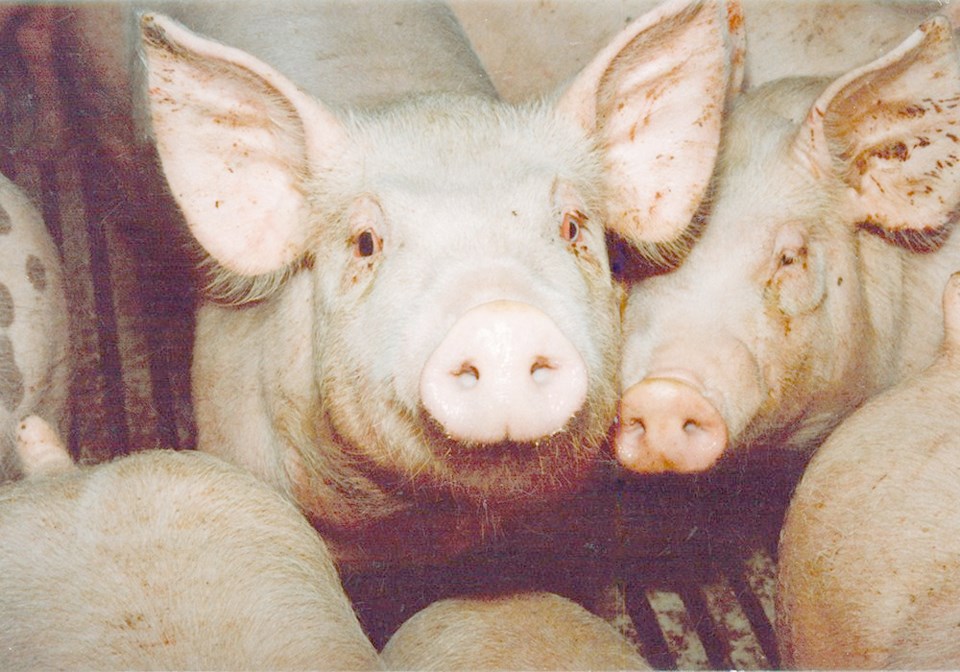WESTERN PRODUCER — Canadian pig producers are happy to put 2023 and its financial losses behind them, but will 2024 be any better?
It appears producers in Canada and the United States are reducing the size of their breeding herds, which normally would reduce the supply of pigs and pork and support the price.
But the January U.S. Department of Agriculture world supply and demand report forecast shows 2024 U.S. pork production rising to 27.99 million pounds, up 2.4 percent over last year.
It sees domestic consumption and exports also rising a little, resulting in year-end stocks steady with the number for 2023.
Those numbers are not a basis for strong price increases.
Indeed, the USDA forecasts a full-year 2024 average price for barrows and gilts of US$58 per 100 pounds, slightly lower than the $58.59 estimated as the full-year average for 2023.
However, it is early in the year and the herd contraction might be steeper than what the USDA has registered so far.
Statistics Canada’s report on livestock inventories as of Jan. 1 does not come out until late February so I’ll look at the latest American data for signs of what it happening in breeding herds.
The Dec. 1 U.S. quarterly hogs inventory report showed the breeding herd at slightly less than six million head, down three percent from the same point the previous year, so some liquidation is happening.
The report also showed producers intend to farrow 2.9 million sows during the December 2023 through February 2024 quarter, down two percent from the number farrowed in the same period in 2022-23.
Fewer farrowed sows should mean a smaller pig crop, but there are strong gains in the number of pigs produced per litter.
In the September-November quarter, pigs per litter rose to a record high 11.66, up four percent from the same period the previous year.
The increase in the pigs per litter offsets the decline in the number of sows farrowed, resulting in a total pig crop that is not much smaller than it was a year ago.
The USDA hog inventory report also forecasts that producers intend in the March to May quarter to farrow one percent fewer sows than in the same quarter in 2023.
Jim Long, president and chief executive officer of Genesus Genetics, said in a Jan. 1 commentary on www.swineweb.com that because of the continuing financial losses, U.S. breeding herd liquidation will continue, and by the time of the March 1 hog inventory report, the herd will be less than 5.9 million, down 100,000 from December and 350,000 less than it was in the Sept. 1, 2022, report which was when the losses began.
Canadian and Mexican breeding herds are also being reduced.
He doubts this continued reduction in the breeding herd will be fully offset by pig-per-litter productivity gains, and so total pig crop numbers should decline more than currently forecast.
A factor helping to moderate the hurt from low hog prices is the decline in feed costs.
Corn futures continue to decline and fell sharply on Jan. 12 to the lowest point in 26 months after the USDA monthly supply and demand report revised upward its estimate of the 2023-24 American corn crop to 15.34 billion bushels. This is up from 15.23 billion in its last assessment and higher than what many analysts expected.
It also increased its soybean crop estimate to 4.165 billion bu., up from 4.129 billion previously.
The USDA cut its forecast of Brazil’s soybean crop by less than expected, dropping it to 157 million tonnes from 160 million in the last report.
Many Brazilian forecasters put the soybean crop at 150 to 155 million tonnes.
These assessments depressed grain and oilseed prices. While a disappointment to crop farmers, they are making life a little easier for those who feed livestock.
Another factor affecting hog prices is the pace of pork exports.
In the United States, there was good news on that front. Total amount of pork exported for 2023 to the end of October was 2.36 million tonnes, up nine percent.
Exports to Mexico, the biggest market, rose 13 percent. Exports to China and Hong Kong, the second largest market, were about steady with the previous year.
Exports to the No. 3 market, Japan, fell six percent, but shipments to Canada, South Korea and Central America were up.
Canada’s exports in the same period were not so good, due largely to reduced shipments to the U.S., this country’s biggest market.
Shipments to the U.S. fell 11.4 percent to about 355,956 tonnes. Japan, usually the second largest market, fell 21.8 percent to 151,376 tonnes.
However, shipments to China rebounded, climbing 41.2 percent to 202,566 tonnes .
Shipments to Taiwan and Colombia each more than doubled to about 43,000 and 16,600 tonnes, respectively.




